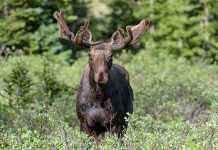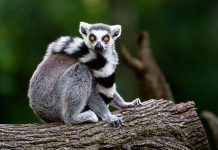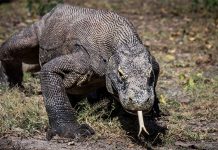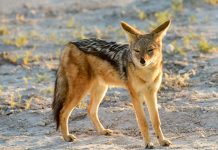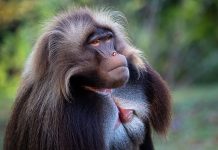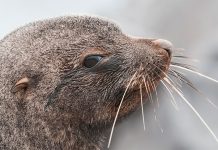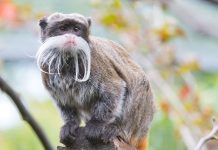
From horses to hippos, hawks to hedgehogs, and hamsters to herons, you’ll discover a variety of fascinating creatures that begin with H. Join us as we explore interesting facts, habitats and more about these incredible animals.
Whether you’re a nature enthusiast, a student, or just curious about the animal kingdom, you are sure to discover interesting things about animals starting with H, gaining valuable information and insights.
Animals Starting with H
So, let’s dive in and discover the wonders of animals that start with H!
Horse

GIVEAWAY: Stand to Win Tickets to Peter & Blue's Treasure Hunt by Singapore Ballet
GIVEAWAY: Stand to Win a Family Bundle of 4 Tickets to Leonardo! A Wonderful Show About A Terrible Monster at LIttle SIFA.
The horse is a majestic animal that has played a significant role in human history. With a long-standing partnership with humans, horses have been companions, modes of transportation, and working animals. They have also been bred for their various physical characteristics and abilities, resulting in a wide variety of horse breeds.
When it comes to types of horses, there is a breed to suit every purpose. Each breed has its own unique physical attributes, such as size, color, and conformation, which make them suitable for different disciplines and activities. From the powerful and muscular draft horses to the sleek and fast thoroughbreds, there is a horse breed for every equestrian enthusiast.
Aside from their physical characteristics, horse breeds also exhibit distinct behavior patterns and temperaments. Some breeds are known for their gentle and calm demeanor, making them suitable for beginner riders or therapy horses. Others are highly energetic and enthusiastic, making them perfect for sports and competitions. Understanding the behavior of different horse breeds is crucial for successful training, handling, and riding.
Furthermore, horses serve a wide range of purposes. They can be found in various industries, including agriculture, ranching, police work, and even therapy programs. Some breeds excel in racing, jumping, dressage, or other equestrian disciplines. They are also valued for their strength and intelligence, making them reliable partners in work and recreation.
Discover more interesting facts about horses.
Hippo
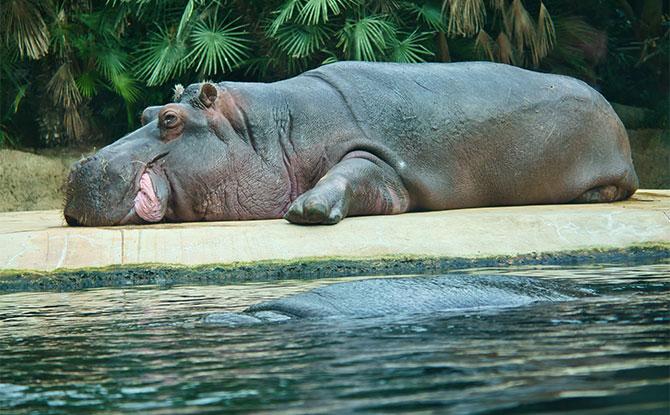
Hippos, scientifically known as Hippopotamus amphibius, are fascinating creatures that inhabit various parts of Africa. These large, semi-aquatic mammals are renowned for their massive size and aggressive behavior, making them one of the most formidable animals in the African savannah and rivers.
Hippos have a unique habitat preference, primarily residing in freshwater habitats such as lakes, rivers, and swamps. They spend a significant amount of time submerged in water to regulate their body temperature and protect their sensitive skin from the sun. Despite their large size, hippos are incredibly agile and can move swiftly both on land and in water.
When it comes to diet, hippos are herbivores, feeding on various aquatic plants and grasses. They have elongated jaws and large tusks that they use for defense and to grip vegetation. Hippos are also known for their unique adaptations, including a modified skin structure that secretes a reddish substance called “blood sweat” which acts as a powerful sunblock and antibiotic.
Socially, hippos are fascinating creatures. They have complex social structures and live in groups called pods or schools. These groups can consist of up to 30 individuals, led by a dominant male known as the alpha male. Hippos communicate with various vocalizations, including grunts, roars, and honks, to establish dominance, warn of danger, or communicate with their pod members.
Hawk

Hawks are magnificent birds of prey known for their keen eyesight, powerful wings, and sharp talons. These impressive predators belong to the family Accipitridae and are commonly found throughout the world, with various species inhabiting different regions.
One of the defining features of hawks is their exceptional eyesight, which enables them to spot prey from great distances. Their keen vision allows them to detect even the smallest movement on the ground or in the air, making them highly efficient hunters.
Hawks are also skilled flyers, utilizing their powerful wings to soar high in the sky and search for potential prey. They are known for their aerial agility and can swiftly maneuver through dense forests and open spaces in pursuit of their quarry.
There are numerous species of hawks, each with its own unique characteristics and adaptations. Some of the most common types of hawks include the Red-tailed Hawk, Cooper’s Hawk, and the Peregrine Falcon, which holds the title of the fastest animal on the planet.
These birds play an essential role in maintaining a balanced ecosystem. By preying on rodents and other small animals, hawks assist in controlling their populations, which in turn helps to maintain the overall health and balance of the food chain.
Hawks are also known for their nesting habits. They typically build their nests, known as eyries, in tall trees or on rocky cliffs. These well-constructed structures provide a safe haven for breeding and raising their young.
Hyena
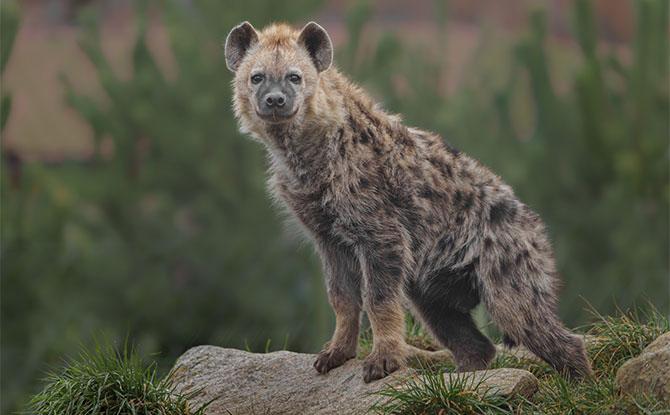
Hyenas are fascinating creatures known for their unique social structure, hunting strategies, and remarkable adaptability. Contrary to popular belief, these animals are not just scavengers, but skilled hunters as well.
The spotted hyena is one of the most well-known species and is easily recognized by its distinctive spotted fur. It is the largest of the hyenas and possesses powerful jaws, capable of crushing bones. Spotted hyenas are highly social animals, living in clans that are led by dominant females.
Hyenas have a reputation for their haunting laughter-like vocalizations, which play a significant role in their communication within the clan. This vocalization serves as a way of identifying individuals and maintaining social cohesion.
When it comes to hunting, hyenas are efficient and relentless. They are capable of taking down larger prey, such as wildebeests and zebras, by working together in coordinated attacks. Their strong bite force allows them to break through bones, ensuring they don’t waste any part of their kill.
Hyenas also exhibit remarkable adaptability, enabling them to thrive in various environments. They are found in a range of habitats, from savannas and grasslands to deserts and forests. This adaptability has helped them become successful predators and scavengers.
Heron

Herons are elegant wading birds found in various wetland habitats around the world. These magnificent creatures are known for their long necks, sharp beaks, and long legs, which make them excellent hunters in shallow waters.
One of the most well-known species of heron is the Great Blue Heron, which can be found across North America. This majestic bird stands tall at around 4 feet in height and has a wingspan of up to 6 feet. With its striking blue-gray plumage and slow, deliberate movements, the Great Blue Heron is a sight to behold.
Herons primarily feed on fish, but they are opportunistic hunters and will also consume amphibians, reptiles, and even small mammals. Using their sharp beaks, herons catch their prey with lightning-fast precision, making them efficient predators in their wetland environments.
Herons build large, sturdy nests made of sticks in trees or on the ground, depending on the species. These nests serve as safe havens for their young, providing protection from predators and harsh weather conditions.
These birds play a vital role in maintaining healthy wetland ecosystems. By controlling fish populations and acting as indicators of wetland health, herons contribute to the overall balance and biodiversity of these habitats.
Hamster
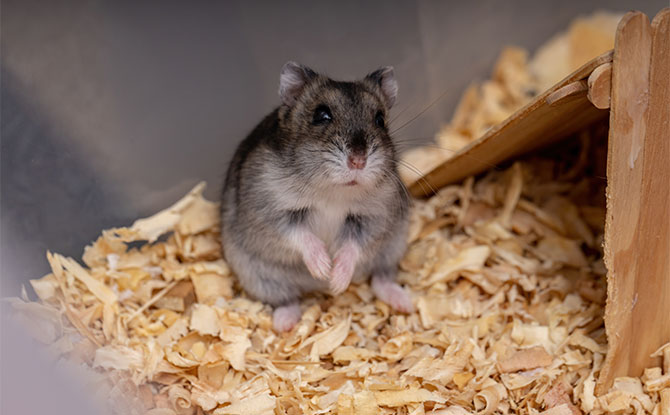
Hamsters are small, adorable rodents that have become popular pets worldwide. They are known for their cute and fluffy appearance, making them a favorite choice for pet lovers of all ages.
First and foremost, providing a suitable habitat for your hamster is vital. This includes a spacious cage with plenty of room for them to exercise and explore. Make sure to include bedding materials, such as shredded paper or wood shavings, to create a comfortable environment.
In terms of diet, a balanced and nutritious hamster diet includes a variety of grains, seeds, fruits, and vegetables.
Hedgehog
Hedgehogs are primarily nocturnal, so be prepared for a pet that is most active during the evening and nighttime hours. They are solitary animals and may not enjoy frequent handling or extensive socialization.
In addition to their unique appearance and behavior, hedgehogs also have fascinating defense mechanisms. When threatened, they curl up into a spiky ball, making it difficult for predators to attack. However, it’s important to handle hedgehogs with care and avoid touching their delicate bellies or disturbing them while they are curled up.
Hummingbird

Hummingbirds are some of nature’s most fascinating creatures. With their vibrant colors and unique flying abilities, they capture the attention and wonder of bird enthusiasts worldwide. These small birds belong to the family Trochilidae and are known for their distinctive physical characteristics and behavior.
One of the most remarkable features of hummingbirds is their specialized beaks. These beaks are long and slender, allowing them to reach deep into flowers to extract nectar, which forms a significant part of their diet. The shape of their beaks varies among different species, enabling them to feed on specific types of flowers.
Hummingbirds are known for their incredibly fast wing flapping speed, which allows them to hover in mid-air and even fly backward. This unique flying ability allows them to access nectar from flowers with precision and agility. It also enables them to escape from predators quickly and efficiently.
Hummingbirds are found predominantly in the Americas, with the majority of species residing in Central and South America. However, there are also species that inhabit North America. Each species has its own distinct range and habitat preferences.
In addition to their beauty and flying prowess, hummingbirds have some interesting facts associated with them. For instance, did you know that hummingbirds have a high metabolism that requires them to consume nectar constantly to fuel their energy needs? They can consume an amount of nectar equivalent to their body weight in a single day! They also have the ability to enter a state of torpor, slowing down their metabolic rate during the night or when food sources are scarce.
Hare
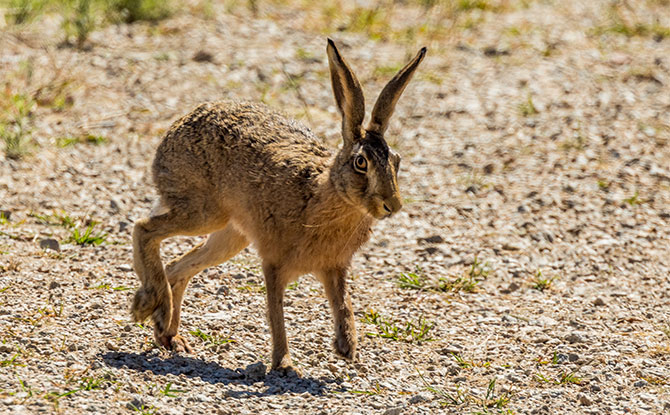
Hares are swift and agile creatures closely related to rabbits. With their long legs and streamlined bodies, hares are built for speed, allowing them to escape from predators. These fascinating animals are known for their ability to reach speeds of up to 50 miles per hour, making them one of the fastest land mammals.
In addition to their impressive speed, hares have other physical adaptations that contribute to their survival. They have large, powerful hind legs that enable them to make quick and agile turns while running. Hares also have long ears that help them detect approaching danger.
When it comes to mating, hares engage in a behavior known as “boxing.” This behavior involves two hares standing upright and hitting each other with their front paws. It is a way for them to establish dominance and determine the strongest mate. Once a pair has formed, the female hare will give birth to leverets, which are fully furred and can hop shortly after birth.
Hares can be found in a variety of natural habitats, including grasslands, woodlands, and deserts. They are widespread across various ecosystems, adapting to different environments. One well-known species of hare is the jackrabbit, which is found in North America. Jackrabbits are known for their large ears and powerful hind legs, allowing them to evade predators and navigate through their desert habitats.
Humpback Whale
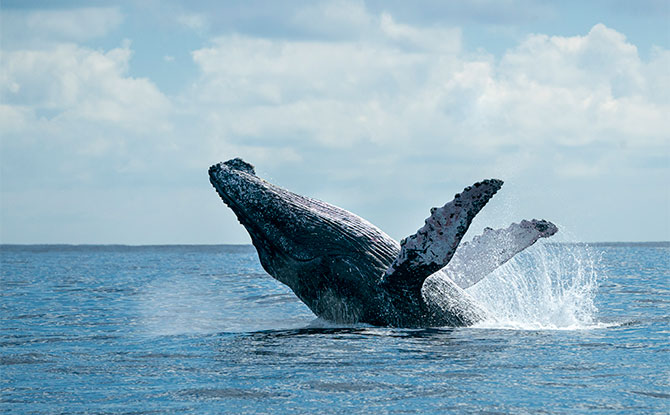
Humpback whales are magnificent marine mammals that captivate people with their awe-inspiring acrobatic displays and haunting songs. These gentle giants belong to the family Balaenopteridae and are known for their massive size, reaching lengths of up to 52 feet and weighing around 30 to 40 tons.
One of the most remarkable aspects of humpback whales is their annual migration. These magnificent creatures undertake long-distance journeys, traveling thousands of miles between their feeding grounds in colder waters and their breeding grounds in warmer tropical waters. This remarkable migratory pattern is characteristic of many whale species.
Humpback whales are known for their diverse feeding habits. Their diet primarily consists of small fish, krill, and other tiny marine organisms. They are filter feeders, using a unique feeding technique called lunge feeding, where they engulf large volumes of water and filter out their prey using baleen plates in their mouths.
Another fascinating behavior of humpback whales is their social nature. They are highly sociable animals and often gather in groups known as pods. These pods can consist of a few individuals or even dozens. Within these pods, humpback whales display various social behaviors, including breaching, tail slapping, and engaging in complex courtship displays.
One of the most well-known characteristics of humpback whales is their intricate songs. Male humpbacks produce a series of melodic sounds that can last for several minutes. These songs are believed to play a significant role in courtship and communication among individuals.
Hornet
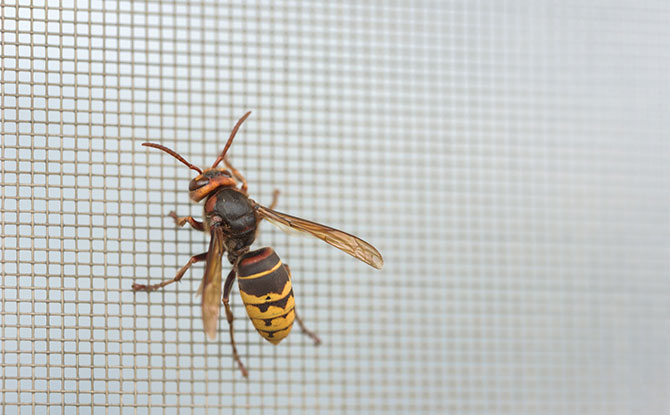
Hornets are stinging insects that belong to the wasp family. They are known for their distinct physical characteristics, nesting habits, and social structure. There are several types of hornets found worldwide, each with its own unique traits and behaviors.
One of the most common and well-known types of hornets is the European hornet (Vespa crabro). These hornets are larger in size and have a yellow and brown coloration. They build their nests in tree cavities, barns, and other sheltered areas.
Another type of hornet is the Asian giant hornet (Vespa mandarinia). These hornets are native to Asia and are known for their large size, reaching up to 2 inches in length. They are highly aggressive and can deliver a painful sting.
The sting of a hornet can be quite potent and can cause pain, swelling, and redness at the site of the sting. It is important to exercise caution when encountering hornets and to seek medical attention if a severe allergic reaction occurs.
Haddock
Haddock, scientifically known as Melanogrammus aeglefinus, boasts several distinctive characteristics that make it a notable member of the cod family.
Sporting a sleek, elongated body with a distinguishable dark lateral line running along its sides, the haddock is easily recognizable. Its coloration ranges from olive-green to brown on the upper side, fading to a silvery white on the belly. Notably, haddock possess a unique “black spot” on each side near the pectoral fin.
hey typically inhabit the cold, nutrient-rich waters of the North Atlantic, ranging from the coastal shelves to depths of over 500 meters. Their diet primarily consists of small fish, crustaceans, and various marine invertebrates, which they hunt using their sharp teeth and keen senses.
Harrier
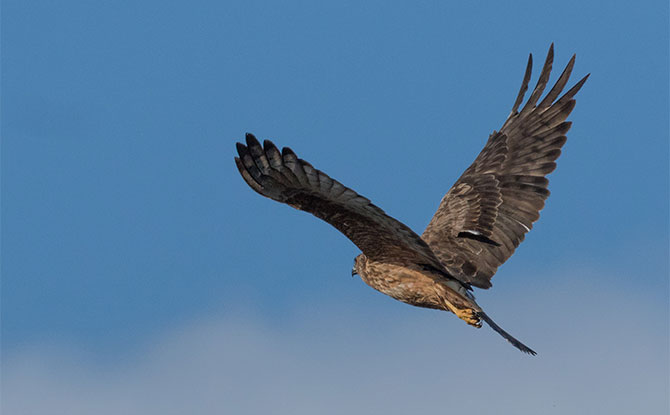
Harriers are a fascinating group of medium-sized birds of prey known for their distinctive hunting techniques and graceful flight. These birds, including the Marsh Harrier, belong to the family Accipitridae and are known for their agile hunting skills and aerial elegance.
Harriers are highly adaptable birds and can be found in various habitats around the world, including marshes, meadows, and wetlands. They have unique hunting strategies, such as low-flight hunting, where they glide just above the ground to surprise their prey.
One species of harrier that is well-known is the Marsh Harrier (Circus aeruginosus). These birds are found in Europe, Asia, and parts of Africa. They have a distinctive flight pattern with deep, slow wingbeats and a characteristic ‘v’-shaped posture.
Harriers primarily feed on small mammals, birds, and reptiles. Their exceptional agility and keen eyesight enable them to locate and capture their prey with precision. Harriers play a crucial role in controlling rodent populations, making them valuable for maintaining a balanced ecosystem.
Hammerhead Shark
Hammerhead sharks are fascinating creatures with unique and distinctive hammer-shaped heads. These shark species belong to the Sphyrnidae family and are known for their extraordinary physical adaptations. Hammerhead sharks have a set of eyes positioned on the lateral extensions of their “hammer,” giving them panoramic vision and excellent depth perception. This specialized feature allows them to efficiently scan their surroundings for prey and potential threats.
One of the most intriguing facts about hammerhead sharks is their hunting methods. Their wide set of eyes enables them to have a wider field of vision, giving them an advantage in locating prey. Additionally, their flattened heads contain an array of electroreceptors, known as ampullae of Lorenzini, which can detect electrical signals emitted by other animals. This electro-sensory system helps hammerheads locate hidden prey, such as stingrays hiding in the sand, making them highly efficient predators.
Hammerhead sharks are also known for their impressive migratory patterns. Different species of hammerhead sharks undertake long-distance migrations, sometimes covering thousands of miles. These migrations are influenced by factors such as changes in water temperatures, availability of food, and mating opportunities.
In addition to their physical adaptations and hunting methods, hammerhead sharks also exhibit interesting social behavior. They are known to form schools or groups, with some species forming large aggregations during certain times of the year. These social gatherings serve various purposes, including feeding, mating, and protection against potential predators. Observing these social behaviors provides valuable insights into the complex lives of hammerhead sharks.
Honey Badger
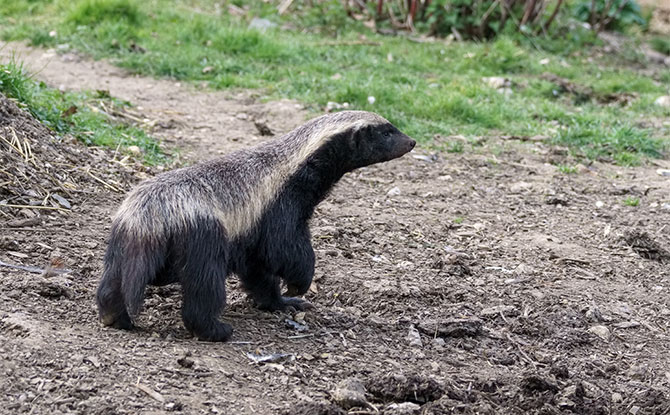
Honey badgers, also known as ratels, are fearless and tenacious creatures with a reputation for their ferocity. These small mammals belong to the Mustelidae family and are native to Africa, Southwest Asia, and the Indian subcontinent.
One of the most remarkable characteristics of honey badgers is their physical adaptations for survival. They have thick, tough skin and remarkably strong jaws, allowing them to withstand attacks from predators and efficiently devour their prey. Their claws are sharp and powerful, enabling them to dig burrows and tear through obstacles with ease.
When it comes to hunting, honey badgers are opportunistic carnivores. They have a diverse diet that includes small mammals, birds, reptiles, insects, and even carrion. Known for their tenacity, honey badgers are relentless in their pursuit of food, often attacking animals larger than themselves.
In addition to their formidable hunting skills, honey badgers are also highly adaptable to different environments. They can be found in a variety of habitats, including grasslands, forests, and even deserts. These resourceful creatures have the ability to make use of available food sources and quickly adapt to changing conditions.
Socially, honey badgers are typically solitary animals. However, they may form pairs or small family groups during the mating season. Female honey badgers give birth to one or two cubs, which are raised in burrows until they are old enough to fend for themselves.
Hawkmoth
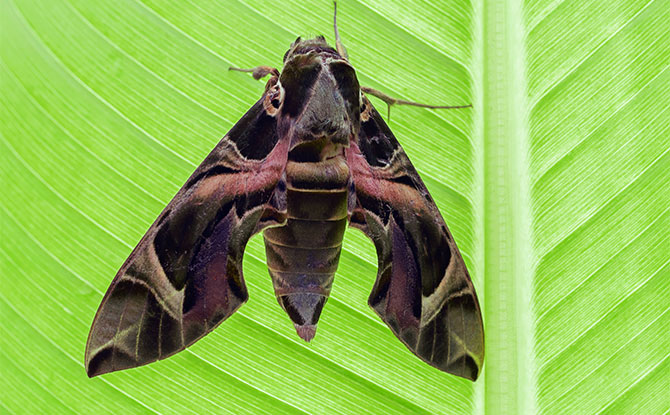
Hawkmoths, also known as sphinx moths, are fascinating insects known for their swift flight and remarkable pollination abilities. These remarkable creatures belong to the Sphingidae family, which includes a diverse range of species with unique characteristics. Hawkmoths are known for their large size, elongated bodies, and long proboscis, which they use to extract nectar from flowers.
One fascinating species of hawkmoth is the hummingbird hawkmoth. As the name suggests, this moth closely resembles a hummingbird in appearance and behavior. It hovers in front of flowers, using its long proboscis to feed on the nectar. The hummingbird hawkmoth’s ability to hover and its swift movements make it a remarkable pollinator, transferring pollen from one flower to another as it feeds.
Hawkmoths play a vital role in plant pollination, especially in night-blooming flowers. Many of these flowers have evolved to attract hawkmoths through their strong fragrance and white or pale coloration, which is visible in low light conditions. As hawkmoths visit these flowers for nectar, they inadvertently transfer pollen between plants, aiding in the plants’ reproduction.
The life cycle of a hawkmoth is truly fascinating. It starts with an egg that hatches into a caterpillar known as a hornworm. Hornworms are voracious feeders, consuming large amounts of leaves before undergoing metamorphosis. After feeding and growing, the caterpillar enters the pupal stage, forming a protective cocoon. Inside the cocoon, the transformation from a caterpillar to a moth takes place, and eventually, the adult hawkmoth emerges.
Housefly
Houseflies are common insects that can be found in various environments around the world. Known scientifically as Musca domestica, they belong to the order Diptera, which includes all true flies. Houseflies are easily recognizable by their small size, typically measuring around 6 to 7 millimeters in length. They have a grayish appearance with four dark stripes running lengthwise on their thorax.
The life cycle of a housefly consists of four stages: egg, larva, pupa, and adult. After mating, a female housefly lays her eggs on a suitable substrate, such as decaying organic matter. The eggs hatch into larvae, commonly known as maggots. Maggots are small, legless white larvae that feed on the organic material, helping to break it down.
As the larvae grow, they undergo several molts before entering the pupal stage. During this stage, the larva transforms into an adult fly inside a protective case called a pupa. After a period of development, the adult housefly emerges from the pupa and begins its short but prolific life.
Houseflies have a rapid life cycle, with the entire process from egg to adult typically taking around 10 to 21 days, depending on environmental conditions. The adult fly is equipped with a specialized mouthpart called a proboscis, which is used for feeding on liquids such as nectar, sap, and decomposing matter.
Houseflies can be a nuisance due to their habit of seeking out food sources in homes and other areas frequented by humans. They can also pose a health risk as they are known to carry and transmit a variety of diseases, including cholera, dysentery, and typhoid fever.
Hog
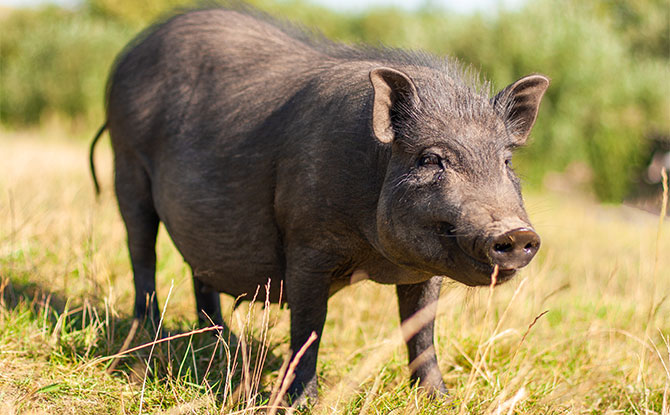
Hogs, including wild boars and domestic pigs, are highly adaptable mammals found in various ecosystems around the world. They possess unique physical characteristics that distinguish them from other animals. With their robust bodies, short legs, and elongated snouts, hogs have evolved to thrive in diverse habitats, ranging from dense forests to open grasslands.
Wild boars, also known as wild hogs or feral pigs, are the ancestors of domesticated pigs. They are known for their strong tusks, which they use for defense and foraging. Wild boars are highly intelligent and have a keen sense of smell, allowing them to locate food sources even in challenging environments.
In contrast, domestic pigs have been selectively bred for thousands of years to serve various purposes. They come in different breeds, each with its own distinctive characteristics. Domestic pigs are known for their docile nature and have been kept by humans for meat production, as pets, and even for therapy purposes.
Herring
Herring is a highly valued fish species that plays a significant role in both the natural world and human culture. With its abundance and economic importance, herring has become a staple in many countries’ fisheries.
There are several types of herring, each with its own unique characteristics and habitats. These include Atlantic herring, Pacific herring, and Baltic herring, among others. Each species has its own migration patterns, spawning behaviors, and ecological significance.
In marine ecosystems, herring plays a crucial role as a prey species, providing food for various marine predators such as seabirds, seals, and larger fish. Additionally, herring fisheries contribute to the livelihoods of many coastal communities and play a vital role in the economy.
Throughout history, herring has held cultural significance in various cuisines. From pickled herring in Scandinavian countries to smoked herring in the Netherlands, this fish has found its way into traditional dishes around the world.
Hoopoe
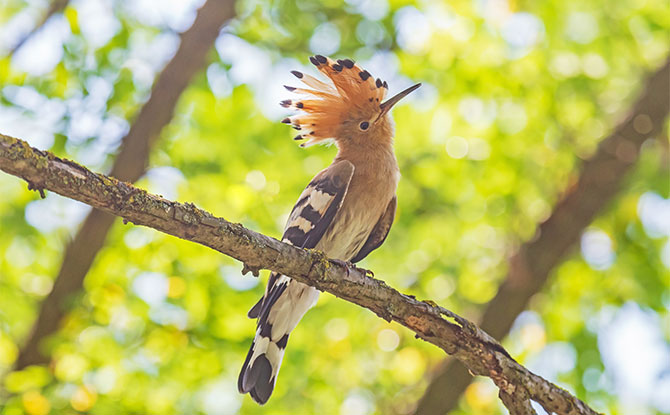
The hoopoe is a fascinating and colorful bird that captivates with its vibrant plumage and unique appearance. These birds are known for their distinctive crown of feathers on their heads, which adds to their charm and beauty. Hoopoes can be found in various regions around the world, including Europe, Asia, and Africa, and are celebrated for their striking colors.
Not only are hoopoes visually stunning, but they also have unique nesting habits. They are known to nest in tree cavities, which they line with materials such as grass, feathers, and leaves. The female hoopoe exhibits remarkable parenting behavior by sealing the nest entrance with mud, leaving only a small opening for the male to provide food for the family.
When it comes to feeding, hoopoes have a diverse diet. They primarily feed on insects, such as beetles, ants, and caterpillars, but also indulge in fruits and seeds. Their long, thin beaks are perfect for probing the ground in search of hidden insects and grubs.
Beyond their physical characteristics and behaviors, hoopoes also hold symbolic significance in different cultures. In ancient Egyptian mythology, they were associated with the Sun God Ra and were considered symbols of protection and resurrection. In some cultures, hoopoes are believed to bring good luck and are seen as messengers from the spirit world.
Hoatzin
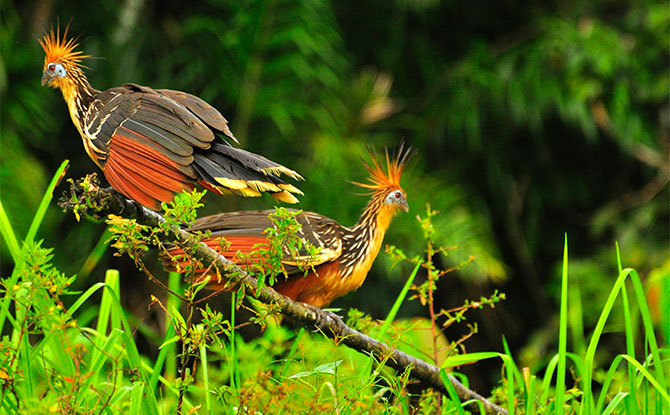
Hoatzins are fascinating birds found in the rainforests of South America. These unique creatures are known for their distinctive appearance and fascinating adaptations.
The hoatzin bird, also known as the Stinkbird, is famous for its crest of feathers on its head and striking blue face. These colorful features make the hoatzin a visually stunning species.
The hoatzin bird has a specialized digestive system that sets it apart from other bird species. While most birds rely on their gizzards to break down food, hoatzins have a unique fermentation chamber in their digestive tract. This allows them to digest the tough leaves and vegetation that make up a large part of their diet.
Harpy Eagle
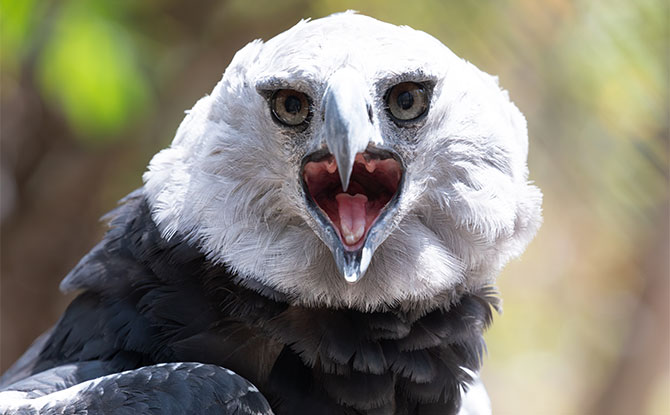
The harpy eagle is an impressive bird of prey that captivates with its immense size and powerful grasping talons. This magnificent species is known for its unique physical adaptations, hunting techniques, and habitat preferences.
With a wingspan of up to 7 feet (2.1 meters) and a height of 3.5 feet (1.1 meters), the harpy eagle is one of the largest and most powerful eagles in the world. Its large, hooked beak and strong talons make it a formidable predator in the rainforests of Central and South America, where it primarily hunts tree-dwelling mammals such as monkeys and sloths.
Hermit Crab
Hermit crabs are fascinating marine crustaceans that have captured the curiosity of many. These unique creatures are known for their peculiar habit of using empty snail shells as protective homes. Let’s dive into the world of hermit crabs and explore their remarkable adaptations, intriguing feeding habits, and social behaviors.
One of the most fascinating aspects of hermit crabs is their ability to change shells. As the hermit crab grows, it needs to find progressively larger shells to accommodate its size. This process, known as “shell selection,” is crucial for the hermit crab’s survival and protection.
Hermit crabs are skilled foragers, scavenging the ocean floor for food. They have a diverse diet that includes algae, bacteria, small invertebrates, and decaying organic matter. Their scavenging behavior plays a vital role in maintaining the balance of marine ecosystems.
These crustaceans are also highly social animals, often living in groups and displaying complex behaviors. They communicate with each other through a combination of visual displays and chemical cues. Social interactions among hermit crabs are essential for mating, finding suitable shells, and establishing dominance hierarchies within their communities.
Honeybee
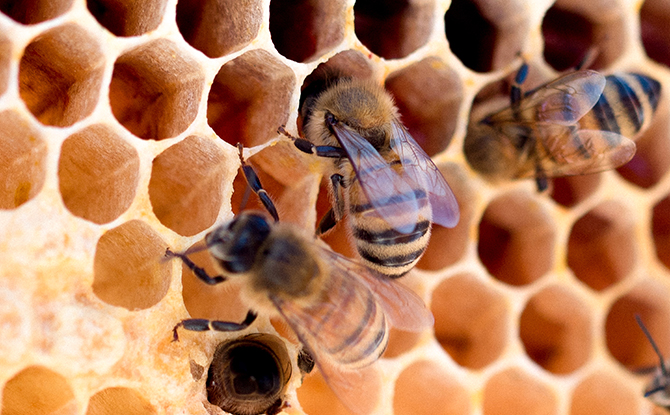
Honeybees are critical pollinators and key contributors to the global ecosystem. They play a vital role in the reproduction of plants by transferring pollen from male to female flowers, enabling the plants to produce fruits and seeds. Without honeybees, many crops and flowering plants would struggle to reproduce, leading to a decline in biodiversity and food production.
There are various species of honeybees, including the well-known Western honeybee (Apis mellifera). These bees live in highly organized colonies, with a queen bee, worker bees, and drones. Each member of the colony has specific tasks and responsibilities, ensuring the survival and productivity of the hive.
One of the most valuable products of honeybees is honey, which they produce by collecting nectar from flowers, converting it into honey, and storing it in their hives. Honey is not only delicious but also has several health benefits. It is rich in antioxidants, has antibacterial properties, and can soothe sore throats and coughs.
The importance of honeybees goes beyond honey production. They are responsible for pollinating a wide range of crops, including fruits, vegetables, and oilseeds. Without honeybees, the yield and quality of these crops would be significantly reduced. This, in turn, would impact food availability, increase food prices, and have adverse effects on global food security.
Read some interesting bee facts for kids.
Hammerkop
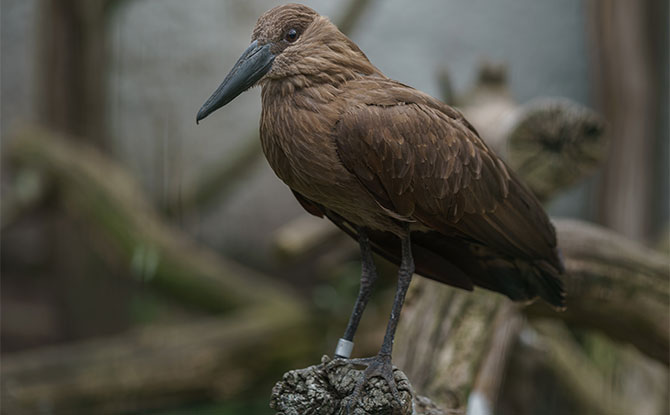
The hammerkop, scientifically known as Scopus umbretta, is a fascinating bird species that can be found in various regions across Africa and Madagascar.
Hammerkops are primarily found in wetland habitats such as marshes, rivers, and lakes. They are skilled foragers and feed on a diverse diet that includes fish, amphibians, insects, reptiles, and small mammals. These birds have also been observed using their strong bills to dig for prey in the muddy bottoms of water bodies.
One of the most remarkable aspects of hammerkops is their nest-building behavior. These birds construct large, elaborate nests made of sticks and other materials, often located in trees or on man-made structures such as bridges or utility poles. The nests can reach impressive sizes, sometimes measuring up to 1.5 meters in diameter. The spacious interior of the nest provides a safe and secure shelter for the hammerkop and its offspring.
Not only do hammerkop nests serve as nesting sites, but they also play an important ecological role. The large nests provide habitats for other bird species, as well as nesting opportunities for reptiles and small mammals. They also act as platforms for other bird species to perch and roost, further enhancing the ecological value of these structures.
Hammerkops are fascinating birds that contribute to the biodiversity and ecological balance of wetland ecosystems. Their unique appearance, foraging behavior, and nest-building skills make them an intriguing species to study and observe in the wild.
Horned Lizard
Horned lizards, also known as horned toads, are fascinating reptiles that have evolved unique physical adaptations and remarkable defense mechanisms. These lizards are native to North and Central America, where they inhabit a variety of arid and semi-arid environments.
The horned lizard’s most distinctive feature is its crown of spines, which give it a menacing appearance and provide protection against predators. These spines are actually modified scales and can vary in size and shape depending on the species.
When threatened, horned lizards employ several defense strategies to deter their attackers. One of the most well-known tactics is their ability to shoot blood from their eyes. This behavior is known as “autohemorrhaging” and is an effective deterrent against predators such as snakes and birds. The blood contains toxins that are harmful to these predators and can cause irritation or even blindness.
Another defense mechanism employed by horned lizards is their remarkable camouflaging ability. Their coloration and texture closely resemble the sandy or rocky terrain in which they inhabit. By blending in with their surroundings, they can avoid detection from predators.
Horned lizards have a specialized diet consisting mainly of ants and other small invertebrates. Their unique physiology allows them to consume large numbers of ants without suffering any ill effects. In fact, some species of horned lizards have a specialized gut that can neutralize the formic acid found in ants.
Hawkfish
Hawkfish are a group of colorful reef-dwelling fish that captivate divers and marine enthusiasts with their vibrant appearance and unique hunting techniques. These fascinating creatures can be found in various marine ecosystems around the world, from coral reefs to rocky coastlines.
One of the distinctive features of hawkfish is their physical characteristics. They typically have a slender body, large eyes, and a slightly elongated mouth, which allows them to snatch prey with precision. Their vibrant colors, ranging from reds and oranges to yellows and blues, make them a visually striking presence in any reef community.
When it comes to habitat preferences, hawkfish are commonly found in and around coral reefs. They often perch themselves on corals or rocky outcrops, using their pectoral fins to anchor themselves in place. This unique behavior allows them to stay in position and swiftly dart out to capture passing prey, such as small crustaceans and other small fish.
Being voracious predators, hawkfish exhibit fascinating feeding habits. They are known to use their sharp teeth and powerful jaws to catch unsuspecting prey. Unlike many other reef fish that rely on stealth or ambush techniques, hawkfish adopt a more aggressive approach to hunting. They actively patrol their territory, keeping a close eye on potential prey items and pouncing on them when the opportunity arises.
Another intriguing aspect of hawkfish behavior is their social structure. Some species are known to form small, loosely organized groups, while others are more solitary in nature. They establish territories within their preferred habitat and defend them from intruders using a combination of tactile displays, visual threats, and aggression.
The relationship between hawkfish and coral reefs is also worth noting. Due to their perching behavior, they often select corals or other structures as their hunting grounds and refuge, providing them with protection and a vantage point to scan their surroundings. This symbiotic relationship between hawkfish and coral reefs highlights the interconnectedness of marine ecosystems and the importance of preserving these habitats for the well-being of all reef inhabitants.
Hare Wallaby
Hare wallabies are fascinating marsupials closely related to kangaroos and wallabies. These unique creatures are known for their distinctive physical characteristics, nimble movements, and intriguing behaviors. Let’s explore the world of hare wallabies and discover what makes them so special.
One of the most notable features of hare wallabies is their resemblance to hares, with elongated hind legs and a slender body. This enables them to move swiftly and gracefully through their natural habitat. Hare wallabies are primarily found in Australia, where they inhabit various types of environments ranging from open grasslands to dense forests.
Like other kangaroo species, hare wallabies are marsupials, meaning they give birth to relatively undeveloped young who continue to grow and develop in their mother’s pouch. The pouch provides a safe and nurturing environment for the joeys until they are old enough to venture out on their own.
In terms of behavior, hare wallabies are primarily herbivorous, feeding on a diet of grasses, leaves, and various types of vegetation. They are known to be selective feeders, preferring certain types of plants over others. This selective feeding behavior is influenced by their habitat and the availability of food sources.
Horsefly
Horseflies are blood-sucking flies known for their painful bites and annoying presence. These biting flies belong to the family Tabanidae and are characterized by their large size and often iridescent wings. Horseflies are found worldwide, inhabiting various habitats such as forests, grasslands, and wetlands.
One of the most distinguishing features of horseflies is their mouthparts, which are designed for piercing and sucking blood. They feed on the blood of various animals, including livestock, pets, and even humans. The horsefly bite can be quite painful and can leave a red, swollen mark that may cause itching and discomfort.
Horseflies have a complex life cycle consisting of four stages: egg, larva, pupa, and adult. The females typically lay their eggs near bodies of water, where the larvae develop and feed on organic matter. Once mature, the larvae pupate and emerge as adult horseflies.
There are numerous species of horseflies, each with its own unique characteristics and habits. Some species, like the common horsefly (Tabanus bromius), are known for their strong biting capabilities and are often encountered around livestock and horses. Other species, such as the deer fly (Chrysops spp.), are known for their painful bites and are commonly found near water sources.
While horseflies can be a nuisance to both animals and humans, they also play a role in ecosystems as pollinators and as a food source for other organisms. Their presence, however, can be managed through various methods such as using insect repellents, wearing protective clothing, and maintaining good sanitation practices.
Hercules Beetle
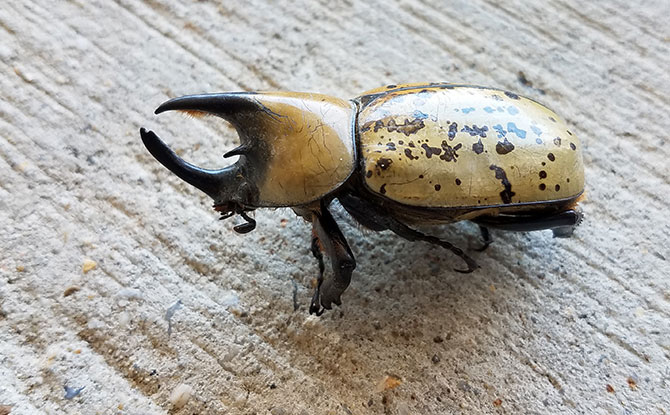
Hercules beetles are fascinating insects that belong to the family Scarabaeidae. They are commonly referred to as rhinoceros beetles due to the distinctive horns that adorn the heads of males in certain species. These magnificent creatures are known for their massive size, with some species measuring up to six inches in length!
The physical characteristics of the Hercules beetle are truly remarkable. Their bodies are robust and covered in a hard exoskeleton that provides protection. The males are equipped with large horns, which they use for combat and to assert dominance during breeding season. The females, on the other hand, possess shorter, less pronounced horns.
The lifecycle of the Hercules beetle consists of four stages: egg, larva, pupa, and adult. The larvae, commonly known as grubs, live in decaying wood or organic matter, feeding on plant material. As they grow, they molt and shed their exoskeletons multiple times. Once they reach the final stage of development, they transform into pupae and eventually emerge as adult beetles.
One of the most impressive aspects of the Hercules beetle is its incredible strength. Despite their relatively small size compared to other animals, they are capable of carrying objects up to 850 times their own weight! This remarkable strength is mainly attributed to their powerful muscles, which allow them to dig tunnels and move objects in their environment.
The diet of Hercules beetles primarily consists of fruit, tree sap, and nectar. The adults are often seen flying near trees and plants, searching for food sources. They have a particular affinity for ripe fruits, using their strong mandibles to chew through the tough skin and extract the nutritious pulp.
Hercules beetles can be found in various regions around the world, including tropical and subtropical areas. Some of the most well-known species include the Hercules beetle (Dynastes hercules) found in Central and South America, and the rhinoceros beetle (Xylotrupes gideon) found in Southeast Asia.
These incredible creatures have captivated the interest of entomologists and nature enthusiasts alike. Through their impressive size, unique horned structures, and incredible strength, Hercules beetles truly showcase the wonders of the animal kingdom.
Horn Shark
Horn sharks are fascinating species of sharks known for their spiky appearance and bottom-dwelling behavior. These unique sharks belong to the family Heterodontidae and are characterized by their horn-like spines on their dorsal fins, hence the name “horn shark”. They can grow up to 4 feet in length and are typically found in the shallow waters of the Pacific Ocean, particularly along the coasts of North America.
One of the notable physical adaptations of horn sharks is their ability to blend in with their surrounding habitat. Their sandy brown coloration helps them camouflage among the rocky sea floor, making them difficult to spot by predators or prey. Their flattened bodies and rough skin provide additional protection by allowing them to wedge themselves into crevices and avoid detection.
Horn sharks primarily feed on bottom-dwelling invertebrates such as crustaceans, mollusks, and small fishes. They have small, sharp teeth that are specially designed for crushing shells and crushing their prey. They are not considered a threat to humans, as they are not aggressive and their diet primarily consists of small marine organisms.
These sharks prefer to inhabit rocky areas, kelp forests, and coral reefs where they can find an abundant food source and suitable hiding spots. They are most commonly observed in depths ranging from 20 to 100 feet. The horn shark’s unique habitat preferences and bottom-dwelling behavior contribute to their role in the marine ecosystem by helping to maintain the balance of biodiversity in their respective habitats.
House Sparrow
The house sparrow (Passer domesticus) is a small bird species that has successfully adapted to urban environments and human presence. Native to Europe, Asia, and North Africa, house sparrows have been introduced to various parts of the world, including North America, Australia, and New Zealand. They are known for their familiar appearance and lively behavior.
House sparrows are small in size, measuring around 6 inches in length. They have stout bodies, short tails, and rounded heads. Both male and female house sparrows display similar plumage, with brownish-gray feathers on the upper parts and pale underparts. Their wings are adorned with black, white, and light brown markings.
These birds are highly adaptable and can thrive in a wide range of habitats, including urban areas, farmlands, and gardens. However, they tend to prefer areas with access to food sources such as grains, seeds, and insects. House sparrows are social birds and are often found in flocks, especially during the non-breeding season.
House sparrows are known for their unique behaviors, such as dust bathing to maintain their feathers’ cleanliness and taking communal roosts during the winter months. Males are also known for their distinct singing, which they use to attract mates and defend their territories.
Hog Deer
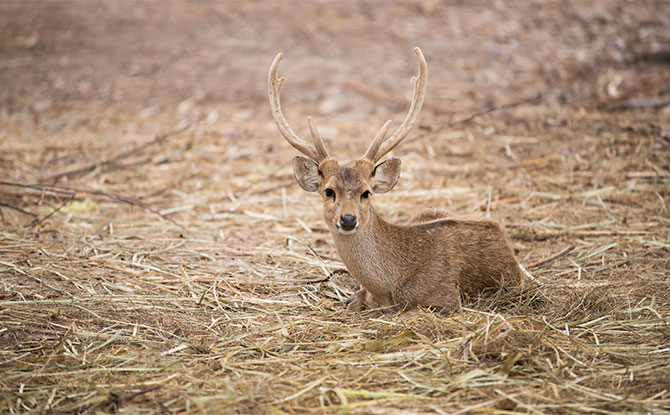
Hog deer are elegant, medium-sized deer known for their distinctive appearance and habitat preferences. These deer species are primarily found in the Indian subcontinent and Southeast Asia. They have a sleek body with short legs and unique antlers. Hog deer are well-adapted to the dense vegetation of grasslands, marshes, and riverine forests, which are their preferred habitats.
One interesting characteristic of hog deer is their mating behavior. During the breeding season, the males compete for the attention of the females by engaging in fierce battles. They use their antlers to establish dominance and win the right to mate. The antlers of hog deer are relatively short but sturdy, making them well-suited for these confrontations.
Another notable feature of hog deer is the growth of their antlers. Unlike other deer species, hog deer’s antlers don’t shed annually. Instead, their antlers continue to grow throughout their lives. This unique attribute adds to the appeal and beauty of these deer.
Honeycreeper
Honeycreepers are a diverse group of small, colorful birds known for their unique beak adaptations and arboreal lifestyle. They are found primarily in the tropical and subtropical regions of the Americas, including Hawaii, the Caribbean, and Central and South America. With over 50 species in the family, honeycreepers exhibit a wide range of physical characteristics and behaviors.
One of the most striking features of honeycreepers is their specialized beak, which varies in shape and size depending on their diet. Some species have long, slender beaks for probing flowers and extracting nectar, while others have thicker, cone-shaped beaks for cracking seeds and fruits. This diverse beak morphology allows honeycreepers to exploit a variety of food resources in their habitats.
Honeycreepers are known for their vibrant plumage, with males often displaying bright colors and intricate patterns during mating displays. Their arboreal lifestyle enables them to navigate through the forest canopy, where they forage for insects, fruits, and nectar. The ability to cling to branches and maneuver among the foliage is facilitated by their sharp claws and agile movements.
These birds are also highly vocal and use a variety of calls and songs for communication. Males often sing to establish territories and attract mates, creating a chorus of melodic sounds in their natural habitats. These vocalizations are crucial for maintaining social bonds and reproductive success within honeycreeper populations.
House Mouse
House mice, also known as common mice, are small rodents that have adapted to living in close proximity to humans. They are found in various habitats, including households, buildings, and farms. House mice are known for their remarkable adaptability, making them highly successful in urban and rural environments alike.
House mice have a distinct physical appearance, with small bodies, pointy noses, and large ears. They typically have gray or brown fur, which helps them blend into their surroundings. These mice have a keen sense of hearing, smell, and touch, allowing them to navigate their environment and locate food sources.
The behavior of house mice is characterized by their social nature. They often live in close-knit family groups, establishing territories within their chosen habitats. House mice are nocturnal creatures, primarily active during the night. They have a rapid reproductive rate, with females giving birth to multiple litters throughout the year.
As opportunistic eaters, house mice have a varied diet that includes grains, seeds, fruits, and vegetables. They are also known to consume insects, small invertebrates, and even small amounts of human food. Their ability to gnaw through various materials, such as wood and plastic, can lead to property damage in homes and commercial establishments.
While house mice may be considered pests due to their ability to infest buildings and transmit diseases, they also play a significant ecological role. They serve as prey for larger predators, including birds of prey and carnivorous mammals. Additionally, house mice contribute to seed dispersal, aiding in plant reproduction.
Harlequin Duck
The harlequin duck, also known as a sea duck, is a mesmerizing waterfowl species admired for its stunning, brightly colored plumage and unique appearance. These beautiful ducks can be found in various coastal habitats across North America, Europe, and Asia.
Harlequin ducks possess distinctive physical characteristics that set them apart from other duck species. Males showcase a vibrant plumage adorned with a striking pattern of bold colors, including white, black, and shades of blue. Females, on the other hand, exhibit a more subtle yet elegant coloration.
These sea ducks have specific habitat preferences, favoring fast-flowing rivers and streams with rocky shores. They are highly skilled swimmers and divers, using their short wings and agile bodies to navigate through turbulent waters and search for their preferred prey, such as aquatic invertebrates and small fish.
As migratory birds, harlequin ducks undertake remarkable journeys to find suitable breeding grounds. They traverse long distances, often heading to remote areas in mountainous regions or arctic tundra where they build their nests. During courtship displays, males showcase their dazzling plumage and perform intricate movements to attract females.
If you enjoyed this story, we think you will also enjoy this one on animals starting with G or animals starting with I.










